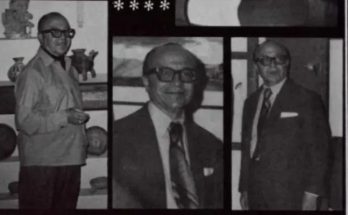By Luis Felipe Rodriguez
Luis Felipe Neri de Alfaro y Velásquez was born in Mexico City on August 25, 1709, to Esteban Valero de Alfaro and María Velásquez de Castilla. He studied at the Royal and Pontifical Seminary, where he was a dedicated student, but very much dedicated himself to the spiritual life. At age 20 he received a bachelor’s degree in theology and was ordained as a priest in 1746. He eventually moved to the town of San Miguel el Grande (today San Miguel de Allende) with the purpose of entering the Congregation of the Oratory of San Felipe Neri, in which he was received on May 26, 1730.
As an Oratorian, he moved to the neighboring town of Atotonilco, 14 kilometers from San Miguel. Here he built the Sanctuary of Jesús Nazareno de Atotonilco, funded by money he received from his inheritance. The building is relatively small—with six chapels, three dressing rooms, and a retirement home. But it is a representative work of 17th century Mexican Baroque and has been listed by UNESCO as a World Heritage Site.
In his sanctuary, Father Alfaro directed six cycles of spiritual exercises per year. These were for several dozen poor people who he carefully selected and cared for. He also founded the Holy Schools of San Miguel el Grande, Guanajuato, and León. He was an ascetic and practiced continuous sacrifices since his childhood. He wrote about this in 1741: «I will remove the mattress and sheets from the bed, and not a day will go by without some mortification in eating and drinking.”
Regarding the penances of Father Alfaro
Father Juan Benito Díaz de Gamarra y Dávalos wrote about the penances of Father Alfaro: “His food was always so scant that he could barely avert hunger … the cilices that he carried throughout his life were so many that they barely left his arms free … on Fridays he would wear a doublet that just looking at it horrified: it caught his entire back, his chest and the frame of his body with such penetrating points that even the fingers hurt when touching it.”
He possessed a deep love for his neighbor, which led him to constantly practice charity.
He instituted the Good Friday procession in San Miguel el Grande, where he wore rough tin soles and used concave plates on his knees. Later he would come out with a rope around his neck, a crown of thorns that made him bleed, and, carrying a heavy piece of wood under which he would fall three times because of the strong blows by a man he hired to do this.
He used to write, in prose and verse, prayers dedicated to Jesus and the Virgin Mary, explaining doctrine to the faithful and enjoining them to entrust themselves to them. The poetry of Father Alfaro did not present deep theological, philosophical problems or political issues. His attempt was to disseminate Christian teachings, dogmas, and practices.
«Two crowns you are offered by two lords,
Look carefully, soul, toward which you incline:
The one that the world offers is made of flowers,
The one that Christ offers is made of thorns.
The one with flowers ends in troubles,
The one with thorns in pilgrim glories.
So choose the one that is most noble,
Which is what Christ carries on his head.”
These writings were captured as murals on the walls and vaults of the Atotonilco Sanctuary by local artist Miguel Antonio Martínez de Pocasangre. The entire interior of the church is covered with the murals.
Father Luis Felipe Neri de Alfaro died on March 22, 1776, at the age of 66, in San Miguel el Grande. Before he died, he had ordered that «on the day of his death there be a day of retreat” with his body present. His remains rest in the Sanctuary of Jesús Nazareno de Atotonilco. The process of his canonization has been underway for a long time, but this is a process that can sometimes take centuries.
Dictionary of Cultural History of the Church in Latin America




